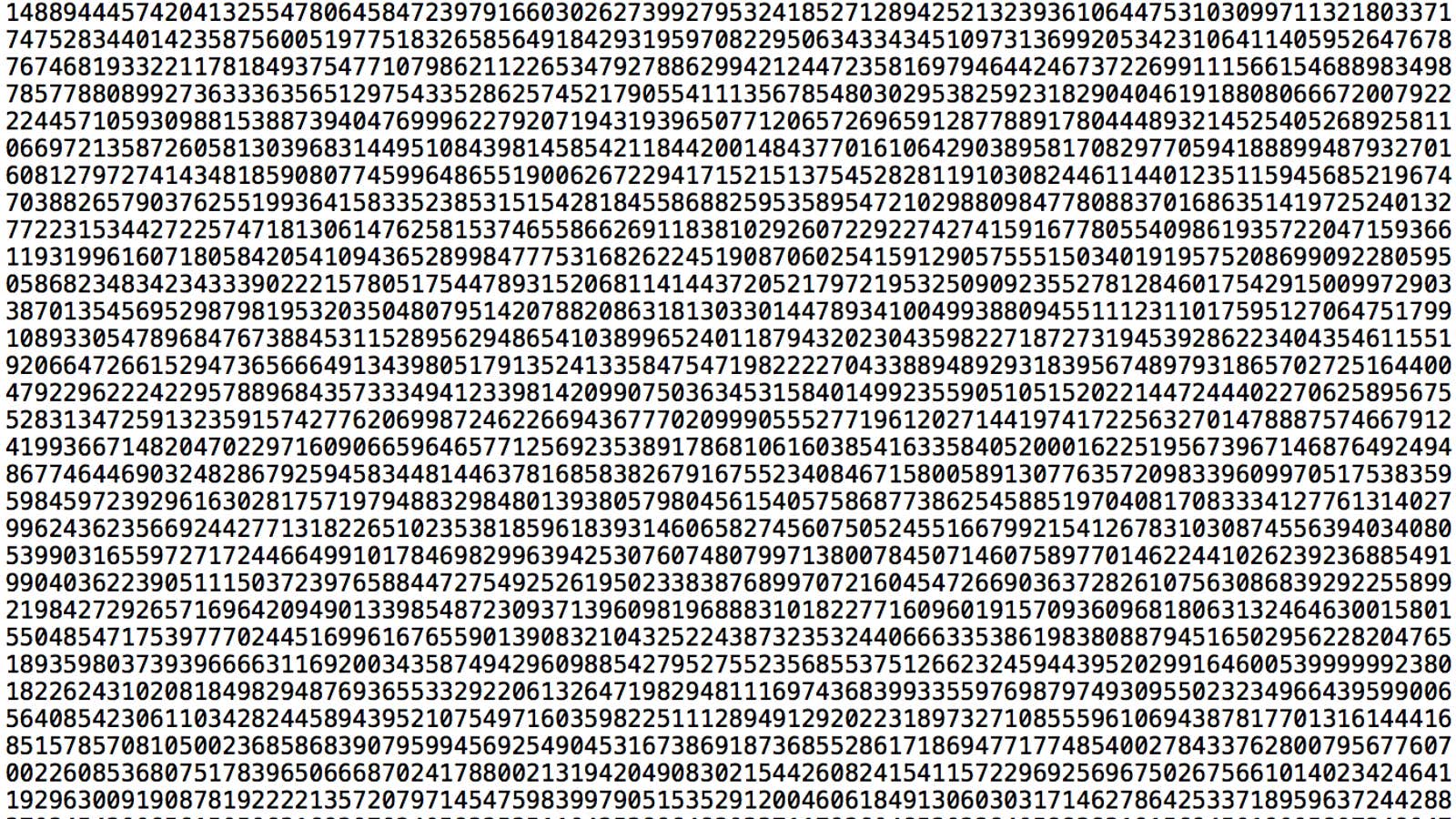There are few things more humbling yet elating than the quest for new prime numbers. Researchers devote decades, and whole careers, to the identification of one more prime in the sea of digits. It’s easy to see the fascination, and why a significant part of the mathematics community is chipping away at infinity, one prime number at a time.
The latest discovery is 282,589,933-1. Identified in Ocala, Florida on Dec. 7, it’s 24,862,048 digits long. You can download the number here, in the form of a very big zip file.
Many have wondered over the decades why people would try to find prime numbers. On the other hand, important cryptography algorithms have been developed based on them. And bitcoin mining, along with mining for other cryptocurrencies, is a mathematical process not unlike the search for prime numbers.
The number found this month belongs to a category known as Mersenne primes, which are one unit less than a power of two. So far, there are 51 known Mersenne primes, and they get discovered with some regularity. (They’re named after a friar who studied the numbers over three centuries ago.)
It’s been about a year since the discovery of the previous largest one, by Jonathan Pace, a 51-year-old electrical engineer in Tennessee. Pace made thousands of attempts over two decades. That’s the thing about mathematics and the pursuit of new numbers: It manages to give at once the measure of the finiteness of human life while at the same time glorifying the ambition of human intellect. It provides a reason worth not just a lifetime pursuit, but the whole arc of humanity. Till we exist, there are numbers. Till there are numbers, there are primes. Till there are primes, we need to exist to discover them.
The latest discovery may be the push we all need to join the quest.
It wasn’t identified by a mathematician, but by Patrick Laroch, a 35-year-old IT professional and volunteer for the Great Internet Marsenne Prime Search. GIMPS is a networked effort that houses prime-mining software on the computers of volunteers. Pace, too, had found his prime through GIMPS, but it took him two decades of attempts. Laroch only tried the software four times in four months to land upon a previously unknown digit.
The number was then verified by mathematicians Andreas Höglund (using two software programs) and Aaron Blosser (using a third). The latter needed over six days to finish the task.
For his discovery, Laroch is eligible for a $3,000 award. And you could be next: Download the GIMPS software here, and get ready to prime.
